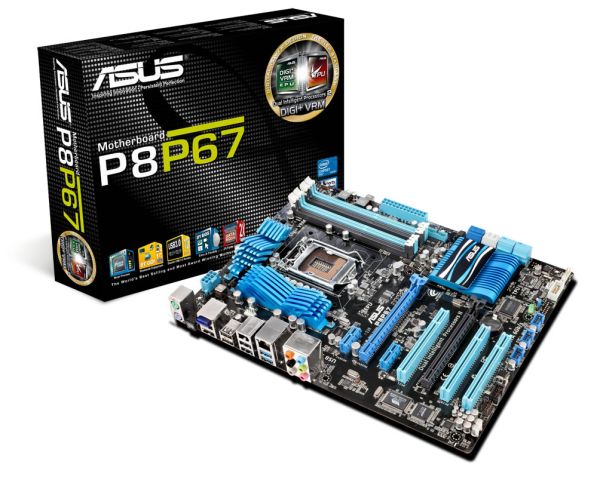ASUS P8P67 Review
by Brendan van Varik on September 8, 2011 10:45 AM EST- Posted in
- Asus
- Motherboards
- P67
Final Words
This is the first motherboard I personally have used on that has a UEFI BIOS and I have to say it is a nice change from the traditional BIOS. Some may argue that the UEFI BIOS is still in its infancy and if this is the case, I think we are looking at something great in the future. From what I can see, the ASUS BIOS engineers have done a good job in producing something that is straightforward and easy to use. The CPU temperature reported in the shipping UEFI BIOS was the only issue I could find. However, as mentioned in the review, I updated the BIOS after all of my testing was done and the CPU temperature appeared to be more accurate.
Even though the P8P67 does not offer as many features as the more expensive models in this range, or even some of the optional extras in the box which other boards come with in the same price range, it does perform better than you may have initially thought. The dual GPU side of things is what lets this motherboard down. Due to the x16/x4 arrangement, rather than the x8/x8 we see on most other P67 boards, it really restricts the amount of data which the second GPU can receive. Therefore the user will not benefit from as much of an increase in frames, but there is scope for other utilities. The power consumption is also higher than other motherboards we have tested.
Overall, despite this board being available for a little while I would say this motherboard is a good contender in the P67 sub $160 price range, but some of the additional extras which come with the ASRock P67 Extreme4 for example may be enough to sway people towards that board instead.











52 Comments
View All Comments
DanNeely - Thursday, September 8, 2011 - link
How are raid 5/10 supposed to work on the two gray SATA6GB ports? You need 3/4 drives to implement those levels.IanCutress - Thursday, September 8, 2011 - link
The ASUS website suggests you can build an array across all the PCH SATA3/6 ports, just not the controller ones.Ian
JonnyDough - Thursday, September 8, 2011 - link
Well that seems silly if your array only runs at SATA II speeds...LtGoonRush - Thursday, September 8, 2011 - link
How many people are going to be building RAID arrays out of more than two SATA600 SSDs? No HDD can even approach SATA300 speeds so it's not really an issue .etamin - Friday, September 9, 2011 - link
HDD burst speeds (reads) can surpass 3gbps. I just saw an article showing the Hitachi DeskStar 3TB 7K3000 can burst to about 5gbps...and just because you don't use more than two drives in a RAID array doesn't mean other people don't.WillR - Saturday, September 10, 2011 - link
He didn't say other people don't. He implied only few do. This is a $150 board, not an enthusiast model. Anyone willing to shell out a couple grand on their SSDs alone should look elsewhere for a board, or more likely an add-on PCI-e x8 card with REAL RAID support, to better suit their needs.DanNeely - Thursday, September 8, 2011 - link
Ok, that would make sense. The review could be clearer on the point though.Taft12 - Thursday, September 8, 2011 - link
mdadmDanNeely - Thursday, September 8, 2011 - link
Soft-raid is completely chipset irrelevant.hurrakan - Thursday, September 8, 2011 - link
Thanks for the review.But I wish it was a review of the P8P67 Pro... specifically the new 3.1 revision with USB 3 controllers by Asmedia (instead of NEC).
I prefer single-card graphics anyway - my GTX580 is enough for now :) Consoles have been holding back PC gaming for too long - PC games aren't very demanding on hardware these days :(